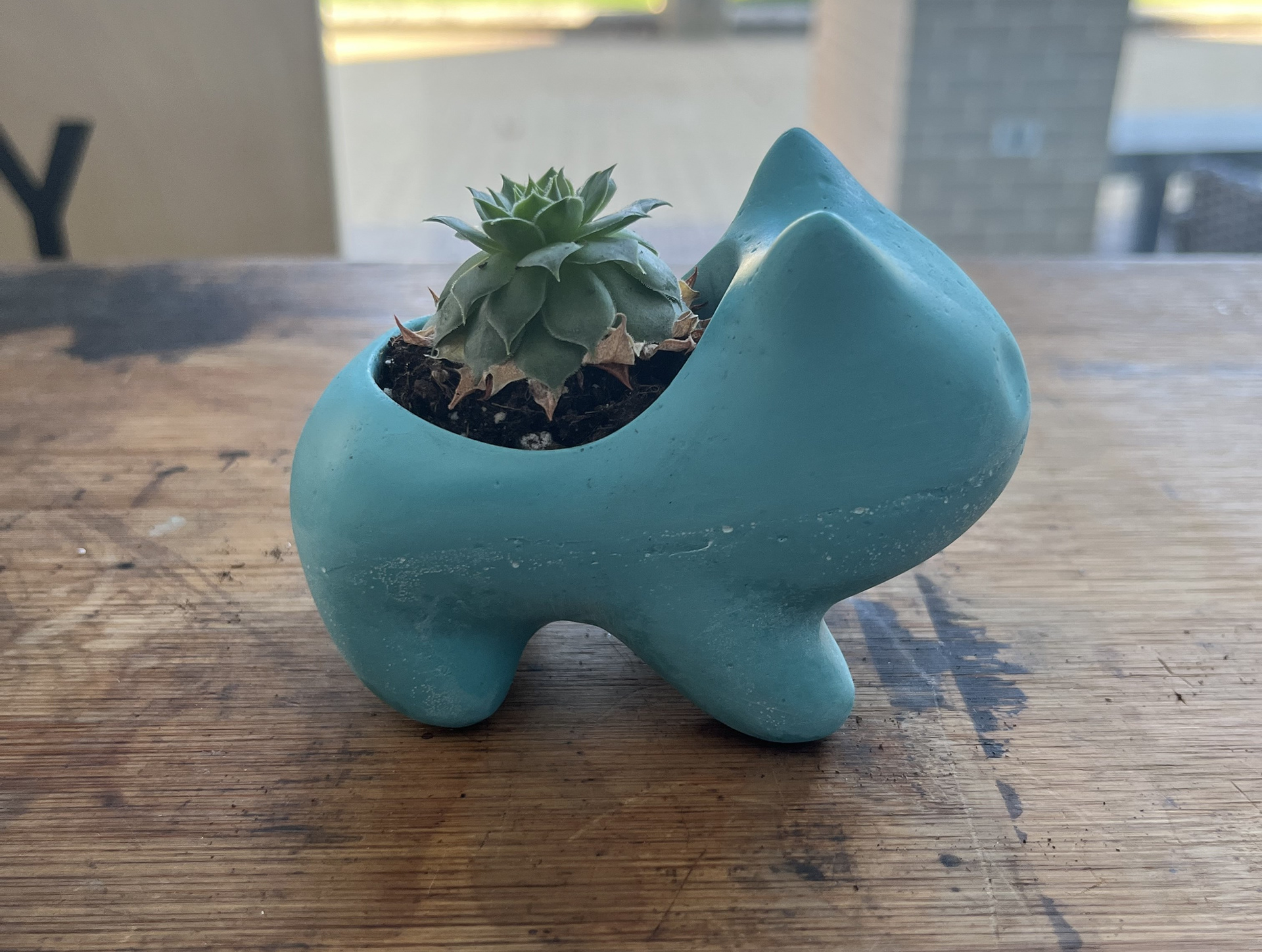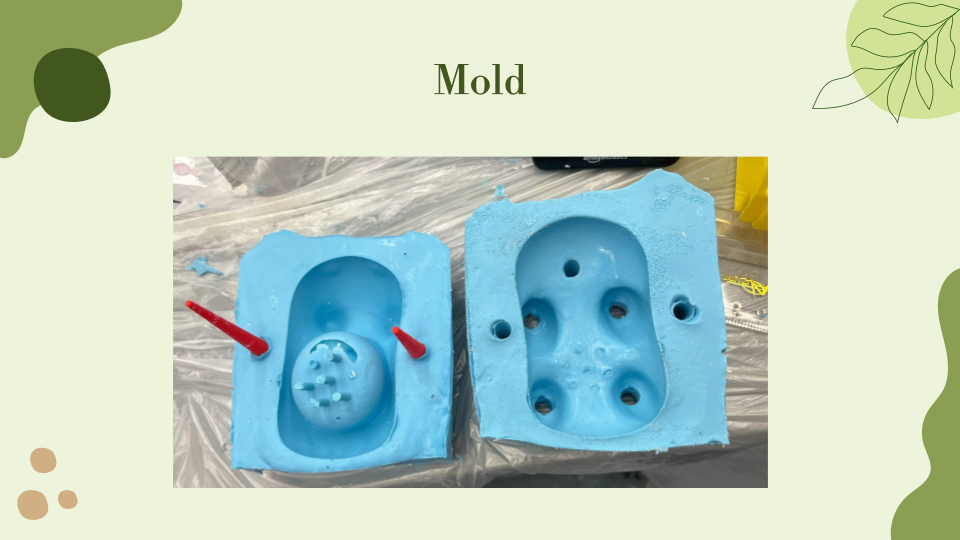This project allowed me to develop my skills in design for manufacturing while creating a cute and functional Bulbasaur succulent planter. The Bulbasaur was first resin printed and then molded in a two part silicone mold before being urethane cast. Both sides of the pokeball was molded using an ABS 3D print and then vacuum formed out of flat sheets. Additionally, a 3D printed center ring and hinge finished out the full assembly. The goal of this project was to create a product that could easily be produced cheaply and quickly in quanitites from dozens to hundreds. We were given a succulent as the centerpiece for the project, and chose to integrate directly into the Bulbasaur!




Molding Details
Core to this project was learning about the fundamentals of mold design. Key to both vacuum forming and urethane casting is draft angles to ensure that parts can easily be remove. All vertical features in the bottom half of the pokeball have a draft angle between 5-10 degrees. A base was also added to the bottom of the molds so they easily popped out of the newly thermoformed parts. Additionally, thinking about air flow is important for both types of molds. For the thermoforming molds small holes are added to allow the vacuum to properly pull down more complex features. These holes are small enough that the plastic can't deform into them, but large enough to allow significant airflow. On the other hand, with the silicone mold multiple holes need to be added with sprues. One of these holes is used for filling while smaller holes are used for air venting. Vent holes are particularly important on areas like the head of the Bulbasaur which are higher up than the fill hole. Alignment sticks where also used to make sure the mold sealed properly.

ABS 3D printed Vacuum Forming Molds

Silicone Urethane Casting 2 Part Mold
Challenges
One unexpected challenge was that the 3d printer took a very long time to print the thermoforming molds. First, the splicer took upwards of 30 minutes to generate the g-code and then the print itself took longer than necessary, with the printer individually jumping to each hole and drawing out the circle before filling in the rest of the layer. In the future, I might reduce the number of holes in the mold to alleviate this, but the mold did perform exceptionally well. I was also surprised by the different material properties of the plastic sheets. The clear PETG was a thinner piece of stock and was both easy to cut and very elastic. On the other hand, the white ABS was very brittle and a stiffer material. Originally, the bottom of the pokeball was going to be clear so that you could more easily see Bulbasaur, but the extra rigidity of the white plastic was necessary (and it looks more realistic).
Another challenge was filling the internal pocket on the bottom half of the silicone mold. since its pops out above the split line of the two molds. To solve this we ended up injecting silicone into the cavity using a syringe through the planters drainage holes. This worked relatively well, but due to the viscosity of the silicone increasing by the time the cavity was being filled a small section of it got sealed off. If I were to do this again, I would allow the first pour to solidify and then pour the cavity separately afterwards. Luckily, this is a part of the Bulbasaur that is hidden by dirt, so no harm was done!
An interesting aspect of the casting process was all of the work that went into pre and post processing the molds and castings. The molds required sanding to smooth them out and remove marks of the printing process, and then the castings required cutting of the sprues and then additional sanding to smooth out the body. This dramatically increases the cycle time of the parts compared to if you only had to pour the urethane and wait for it to cure.
Cost Analysis
The largest cost involved in this project is labor. While this would be reduced at a efficient manufacturing plant, large amounts of labor were required to make the silicone mold and the castings. Between material costs and labor the total cost for 1 Bulbasaur assembly was about $1700. This compares similarly to a Xometry quote to of $2025. The Xometry quote also only includes the urethane cast Bulbasaur and does not include any of the parts of the pokeball. If I was to make 100 of the assemblies and made 4 silicone molds along the way my estimate for in house cost would be $98.58, this could be reduced even more with larger bulk purchases of urethane and ABS. This is cheaper than the Xometry quote of $127.56 dollars each at a scale of 100 parts. However, with Xometry's economy option this price would drop dramatically to $43.33.